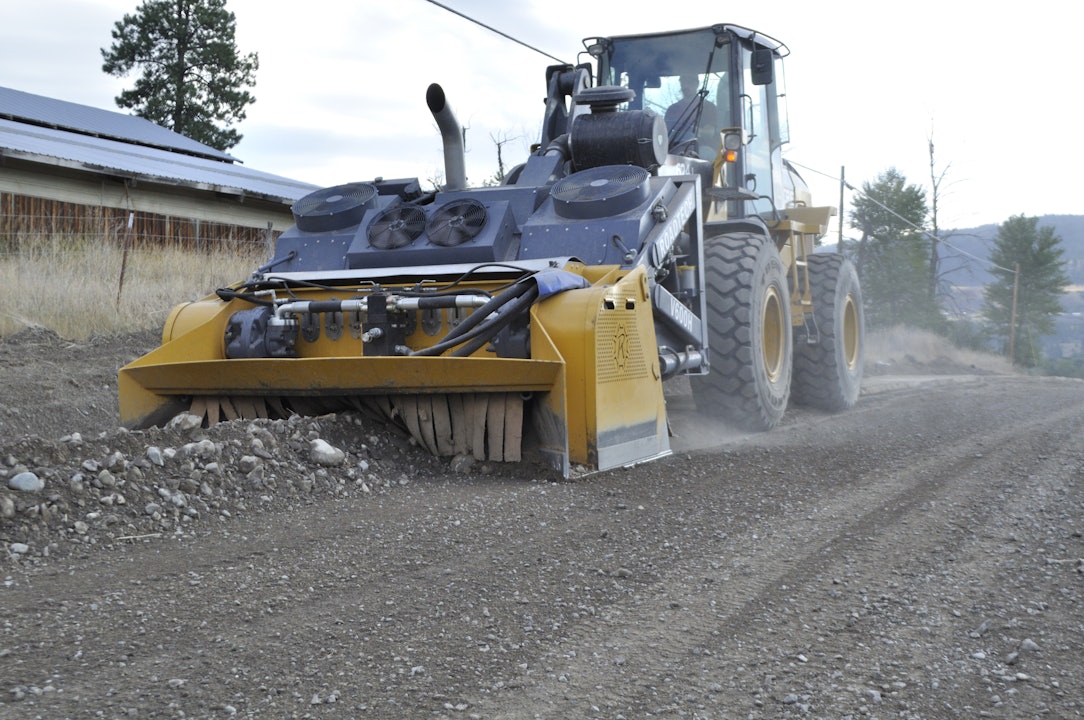The Minnesota Department of Transportation (MnDOT) recently released their proposals for what they rethought Interstate 94 to be. The proposals range from just barely acceptable to seriously concerning. I responded to the survey they put out about their options, but I am still troubled by having looked at those visions of the future they laid out. Can you really, actually, imagine what it is like to be the person who drafted some of those extremist mockups? How big of a rock do you have to be living under to deny the effects of vehicle miles traveled on climate change while you are creating those designs? Is the future that MnDOT sees truly one where we all drive cars while the planet continues to burn?
Here, I want to share a few ideas that start at the first boulevard-ish proposal they have and make some proposals in the other direction, to broaden the spectrum of possibilities and add some hope to how we plan for the future together.

Gravel road: The cheapest no-build option. This option calls for gravel to be placed over the existing infrastructure. Ongoing maintenance costs would be significantly lower than they are at present. Perks include lower speeds and fewer cars driving through the city, even though this option maintains access for motor vehicles. Bikes and pedestrians could also use the area, since it would no longer be a limited-access road. On- and off-ramps would be determined in future planning. Drawbacks would include dust, but considering that this is in a trench the impacts on neighbors should be minimal or similar to what they are currently experiencing. Future research could go in to spraying down the trench with greywater when we are in a dry spell.

Linear park: The cheapest build option. This option calls for the area to be given over to the Department of Natural Resources (DNR), with a budget equaling the general maintenance budget for the current roadway. (I emailed MnDOT to ask what the maintenance budget is for this part of the road in 2023, and they were unable to give me a number as that is “not how [they] track expenses” and it would take “much more than a couple days to try to calculate.” Your humble author imagines the DNR might be able to work some true magic with that kind of money.)

Green space with walking path, bike path, and public housing/community land trust: The investing in our future option. Filling in the trench, creating a park for new and returning residents, and adding back to the existing neighborhood will take a lot of work, but we need homes for people and we need to build back the neighborhood that was wrongfully bulldozed. Residents could access the Green Line to the north or the B Line to the south with a short walk or roll. This model is most like the Twin Cities Boulevard option, and would be able to accommodate the subway called for in that proposal.

Canal system with aquaculture: The so-out-there-it-just-might-work option, inspired by my friend Kacey. What if we did oil spill remediation work on the ground, blocked the drains, and filled the trench with water for a canal system for canoeing and fish farming? It could be a side channel to the Mississippi River if the engineering works out.
Here’s your call to action.
Tell MnDOT what you think of their proposals in this survey. A section at the end allows you to tell them what proposals they should be considering, and feel free to dream big! Talk to your friends and family members about how we can plan for the future without falling into doomerist freeway expansions, and how we can keep hope alive together.
